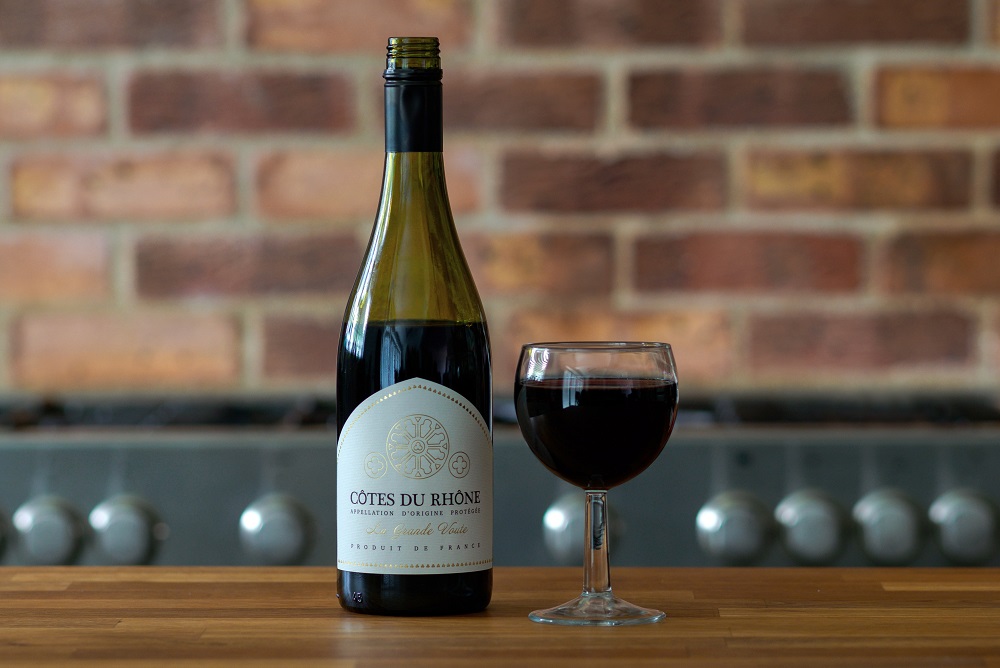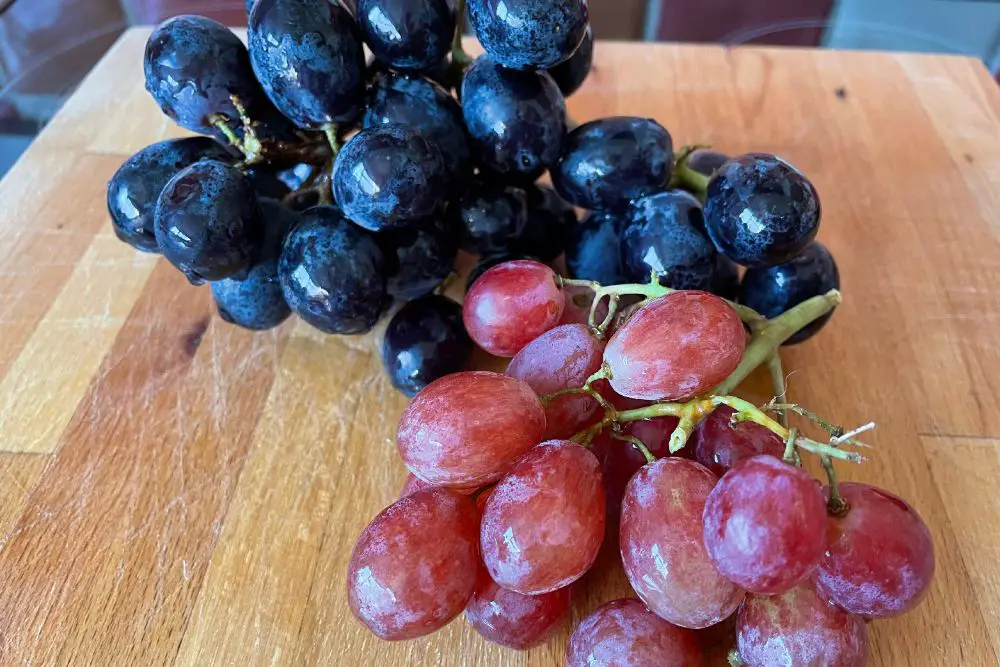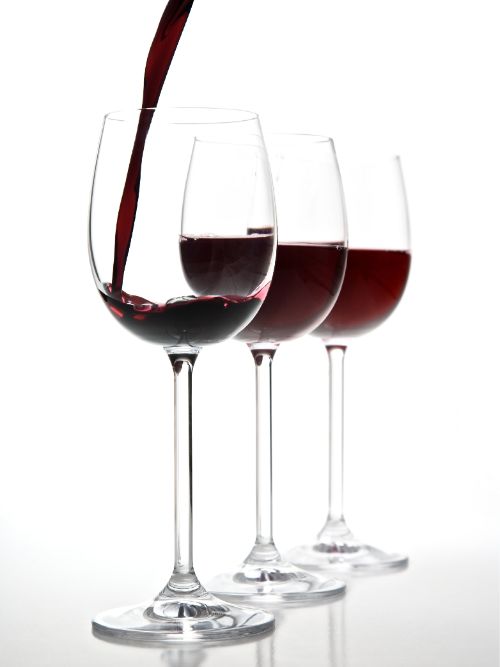Red wine is an extraordinary beverage. Millions of people across the world favor red wine — and are immersed in the joy of wine. It’s produced all over the globe and has thousands of different flavor profiles.
At a first glance – the world of wine can be intimidating. To a beginner, the vast variety of red wine can be daunting. Unless you understand what any of the words refer to, you’re just looking at a jumble of beautifully phrased writing, in a wonderfully packaged bottle.
Maybe you’re new to red wine, and just want to build your repertoire of knowledge. Or, maybe there’s something about red wine that intrigues you, and you’d like to find a wine suited to your taste.
Whatever your need, we’re here to give you a beginner’s guide to red wine. A simple little guide, to help you step foot in the wonderful world of rouge wine.

What Exactly Is Red Wine?
So, briefly – wine is made from fermented juice extracted from grapes with dark skins. There are thousands of different dark-skinned grape varieties, all producing different textures and flavors. Something you need to be aware of is tannins.
Tannins are a substance that appears in grapes naturally. When the skins of a grape are left in the grape juice, the skins will begin to ferment. This fermentation process creates a wine with a high level of tannin.
It’s also the reason red wine has its luscious rouge color — because the grape skins have been allowed to ferment. So, grape juice that has little, or zero interaction with the grape skin results in white or rosé wine.
If you’ve had a sip of a very bitter red, it’s because it has a high tannin count. The taste of tannin is bitter and often leaves a dry taste. Tannins also give red wine texture, that’s why some red wine is ‘smooth’ while others taste ‘rough’.
Qualities To Look For?
Flavor
While there can be hundreds of different aromas in a bottle of wine, red wine primarily gets its flavor from the fruit used. It’s a good starting point when it comes to flavor, as we all generally have some idea of what different fruits taste like.
Red wine primarily uses red, or black fruit — and often a mix of both.
Some typical flavors you might encounter when it comes to red fruit are cherry, plum, and pomegranate. Typical flavors you might encounter with black fruits are blackberry, fig, and black currant.

Color
The color of red wine is related to how long the grape skins were allowed to ferment in the grape juice. A longer fermentation time equals a deeper, bolder color.
Bitterness
As we stated already, the bitterness of a wine relates to tannins. Rouge wine which has a bitter taste has a higher level of tannin content.
Body Types of Red Wine
When you hear people talking about the body of a wine, they’re talking about the mouthfeel. You’ll also hear the phrase ‘viscosity’. This just refers to the thickness of the wine. So, full-bodied wine is going to have a thicker mouthfeel, while a light-bodied wine will feel gentler.
Light-bodied Red Wines
Light-bodied reds are ideal for beginners.
Due to their low tannin count, they’re vastly less bitter than full-bodied wines, making it easier for a beginner’s palette. Or, you might prefer that you enjoy light-bodied wines more. Some wine drinkers prefer delicate wine.
Generally speaking, light-bodied wines have a lighter viscosity, which is why they’re easier to drink. The mouthfeel of a light-bodied wine is lighter than full-bodied wines, which taste heavier.
On average, they tend to have a lower alcohol content — most light-bodied wines are at 12.5% or less.
Light-bodied wines pair excellent with food, such as salmon, but they’re most commonly consumed alone.
A light-bodied wine that we recommend trying out is:
Pinot Noir: A very popular choice, Pinot Noir is a gorgeous, light-bodied wine that primarily contains red fruits. It’s a delicate wine, which is known for its fruity flavor profile and high acidity content.
Medium-bodied Red Wines
Right in the middle, we have medium-bodied wines.
Medium-bodied reds contain a developed flavor, without the complex intensity of full-bodied wines. They’re not as bitter as full-bodied wines, but they’re also not as light and refreshing as a light-bodied wine.
If you enjoy a slight bitterness with your wine, but still want to enjoy a strong level of sweetness, they’re a perfect halfway point.
Their alcohol content tends to be of a higher volume than light-bodied wines, around 12.5%, and 13.5%. They tend to have a good level of viscosity, so they generally feel heavier and fuller in the mouth.
Medium-bodied wines compliment a lot of food, particularly pasta dishes and chicken.
Medium-bodied reds are often your beautiful ruby reds, or your pale reds too. They’re not as rich as full-bodied reds, but have a far more developed color than light-bodied wine.
A medium-bodied wine we recommend trying out is:
Merlot: Another wine we recommend due to its popularity. It’s an excellent, medium-bodied wine for a beginner to examine.
Its flavor primarily derives from black fruits, such as cherry and blackberry – while it has wonderful chocolate undertones and a soft level of tannins. It is not an overly sweet wine, with moderate acidity. An excellent choice.

Full-bodied Red Wines
Lastly, our lovely full-bodied rouge.
Full-bodied reds have a deep color, taste richer, and generally have higher alcohol contents. Full-bodies develop their color from the grape skins fermenting over a longer period, which also means they have a higher tannin content.
Usually, full-bodied wines are used for palette pairing. They’re an excellent accompaniment to a dish, due to their lovely, complex flavoring.
The ideal food to match with a full-bodied red is rich and fatty foods. Very often, you will see full-bodied wines being paired with steak, or hearty meat, as it matches the flavor profile excellently.
A full-bodied red wine we recommend trying out is:
Cabernet Sauvignon: One of the greatest wonders of the full-bodied kingdom is Cabernet Sauvignon. It exhibits a bold and complex flavor profile and generally has forward notes of black fruit, such as blackberry and blackcurrant.
It also has a wonderful woody and herby note. Furthermore, it has a very high tannin content and is a particularly dry wine. Truly exquisite, and a must-try for beginners.
Frequently Asked Questions
How Do I Know Which Wine Is For Me?
Honestly, knowing what type of wine you like comes down to a mixture of trial and error, and understanding the types of flavors that exist in a particular wine. It should be an exciting activity, discovering new unique compositions. Have fun with it.
Red Wine Usually Makes Me Sleepy. Why Is That?
This is a very common question.
The skin of grapes contains melatonin, a hormone that affects your sleep. The fermentation process increases the amount of melatonin, and the more melatonin in the wine — the more likely you are to get a sleepy side effect.
This means that full-bodied red wine is the most likely to make you sleepy, but wine affects everyone differently — so don’t think that just because you drink a full-bodied glass of wine, you’re going to get sleepy.
There’s a lot of different variables that factor in, such as how much you’ve eaten in the day, to how hydrated you are.
Summary
To summarize, the wonderful world of wine can be a daunting forest to step foot in. Full of different notes and aromas, a bitterness for every palate, and a viscosity fit for each individual.
Are you swayed by the light-bodied and refreshing Pinot Noir, or are you tempted by the fruit-forward, but bitter and dry Cabernet Sauvignon?
We hope our beginner’s guide to red wine has been enough to persuade you that wine is an incredibly wonderful beverage, and a unique experience to have.
We understand that choosing a red wine can be daunting, especially if you’ve encountered a good deal of self-proclaimed wine connoisseurs. Not only that, but we hope we’ve explained to you that anyone can be a wine lover, and you can start right at any level.
Enjoy your wine!
- Shrimp Cocktail (and More) Wine Pairing Guide - 09/06/2022
- What Wine Serving Sizes Look Like: Standard Size and More - 08/06/2022
- How Much Sugar is in Wine: Glass and Bottle Sugar Content - 08/06/2022






